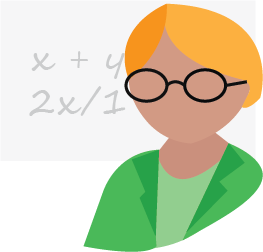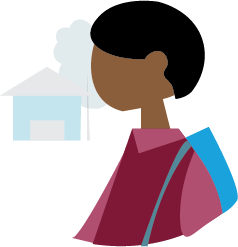NAPLAN explained
 NAPLAN (the National Assessment Program – Literacy and Numeracy) is the only national assessment that all Australian children undertake. It provides comparable data about student performance in literacy and numeracy nationally and over time.
NAPLAN (the National Assessment Program – Literacy and Numeracy) is the only national assessment that all Australian children undertake. It provides comparable data about student performance in literacy and numeracy nationally and over time.
NAPLAN for principals and teachers
NAPLAN for school systems and government
NAPLAN tests students in reading, writing, language conventions (spelling, grammar and punctuation) and numeracy.
It is a nationwide measure to see whether or not young Australians are developing the literacy and numeracy skills that provide the critical foundation for other learning, and for their productive and rewarding participation in the community.
The results for each of the 5 NAPLAN assessment areas (or domains) are reported on a common NAPLAN scale.
Understanding the NAPLAN scale: Rather than a separate scale for each year level tested (3, 5, 7 and 9), the My School website shows a single common scale, which makes it easier to see growth over time. The midpoint of each domain scale is set at 500 NAPLAN score points. The mean score will vary depending on the year level and test domain, and from test year to test year.
The NAPLAN testing moved from May to March in 2023 and the NAPLAN scale was reset. This means you can’t compare NAPLAN achievement prior to 2023 to that from 2023 onwards. Consequently, the NAPLAN results page has been split into 2, with the 2023 NAPLAN results being separated from the 2014–2022 NAPLAN results.
Please note: there is no student progress reporting for 2020-2022 following the cancellation of NAPLAN in 2020 due to the COVID-19 pandemic. There is also no student progress reporting for 2021-2023 due to the resetting of the NAPLAN measurement scale and earlier assessment of students in 2023.
NAPLAN for parents and carers
 What parents and carers say:
What parents and carers say:
“NAPLAN is great when the results are interpreted well. Our school is great at communicating with parents.”
“For me, the interest in NAPLAN is the relative performance of my child, her strengths and weaknesses and over time her improvement.”
“I looked up My School each time my child started school. It didn’t make me change my mind but it did reassure me.”
“It gives me a national snapshot about my child's progress in literacy and numeracy.”
- extracted from the NAPLAN Reporting Review 2019 by Emeritus Professor Bill Louden AM.
As children progress through their school years, it is very important that checks are made along the way to see how well they are learning the essential skills of reading, writing and mathematics – skills that will set them upon the path to success as adults.
NAPLAN assesses literacy and numeracy skills that students are already learning through the school curriculum. Children can prepare for NAPLAN through studying a broad, rich curriculum. On its own, NAPLAN is not a test that can be studied for, and students are not expected to do so. The assessments allow parents and carers to see how their child is progressing against national standards in literacy and numeracy and over time.
NAPLAN is just one aspect of a school’s assessment and reporting process – it does not replace the extensive and ongoing assessments made by teachers about each student’s performance. Your child’s teacher will have the best insight into your child’s educational progress.
NAPLAN for principals and teachers
 What teachers and principals say:
What teachers and principals say:
“NAPLAN is all we’ve got that compares us with the rest of the country.”
“NAPLAN is essential for school improvement and resource allocation.”
“NAPLAN helps us target teaching. We’ve done extra work on spelling after poor spelling results.”
“NAPLAN is used for whole-school planning. It lets us know whether we have taught things and whether children have learned them.”
– extracted from the NAPLAN Reporting Review 2019 by Emeritus Professor Bill Louden AM.
NAPLAN can support school improvement by enabling teachers to monitor their students’ progress over time against the national measure, to identify strengths and areas to improve in teaching programs, and to set goals in literacy and numeracy.
NAPLAN provides additional information to support teacher professional judgement about progress in a child’s level of literacy and numeracy attainment and progress.
NAPLAN for students
 What students say:
What students say:
“Teachers talked about it on the day and went over the questions afterwards.”
“Teacher wanted us to do really well because it’s the last year before high school.”
“It might teach the school what needs to be taught.”
“It’s important for me as I like to do my best.”
- extracted from the NAPLAN Reporting Review 2019 by Emeritus Professor Bill Louden AM.
NAPLAN offers you, your parents/carers and your teachers a snapshot of where you are at on your learning journey. By sitting NAPLAN and trying your best, you are helping make sure teachers and schools have the right information to help every child in Australia get the support they need to reach their full potential.
Literacy and numeracy are core to a well-rounded education and are essential life skills you are always developing in every aspect of daily life, no matter what further education or career path you take.
Remember, you can’t fail NAPLAN. It’s not that type of test. All you have to do is try your best.
NAPLAN for school systems and governments
 NAPLAN helps governments, education authorities and schools to see whether young Australians are reaching important literacy and numeracy goals.
NAPLAN helps governments, education authorities and schools to see whether young Australians are reaching important literacy and numeracy goals.
The assessment provides information about how education programs are working, areas for improvement, and which schools need support in the teaching and learning of literacy and numeracy.
NAPLAN can be used to inform policy development, resource allocation, curriculum planning and intervention programs. It allows governments to monitor the success of policies aimed at improving the achievement of different student groups, such as First Nations Australian students.
NAPLAN for the community

Australians can expect education resources to be allocated in ways that ensure all students achieve worthwhile learning during their time at school.
The reported outcomes of NAPLAN allow the Australian public to get a general national perspective on student achievement and, more specifically, understanding of how their schools are performing.